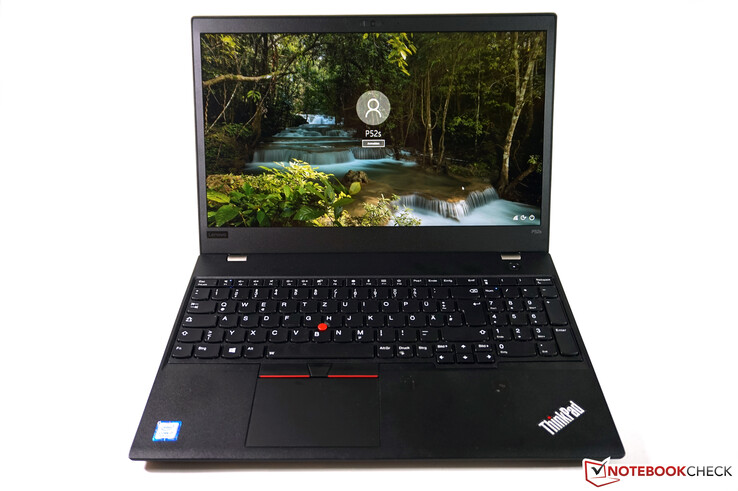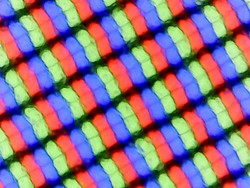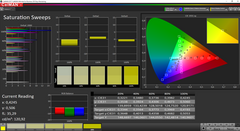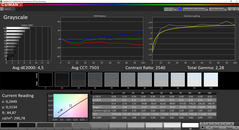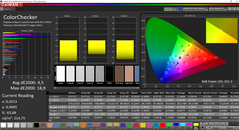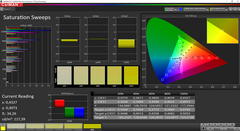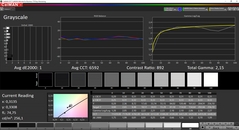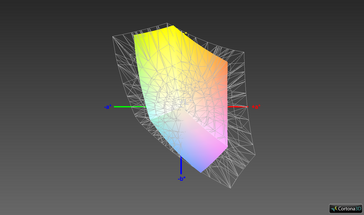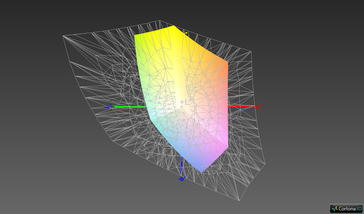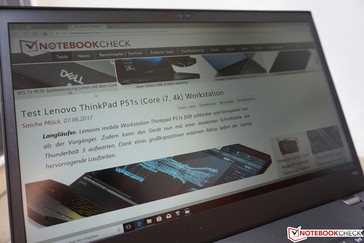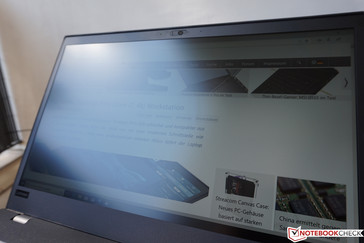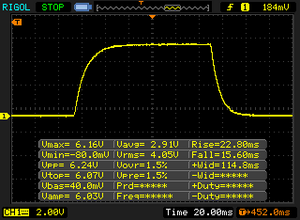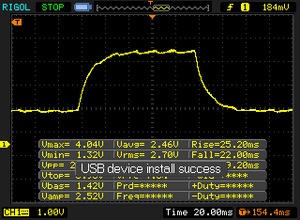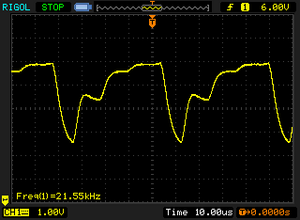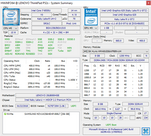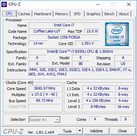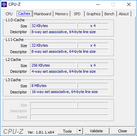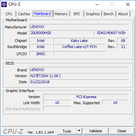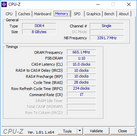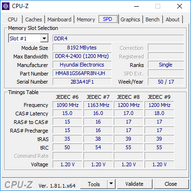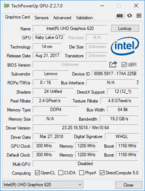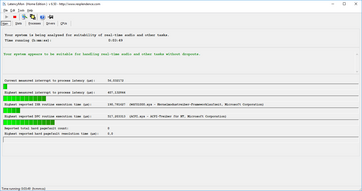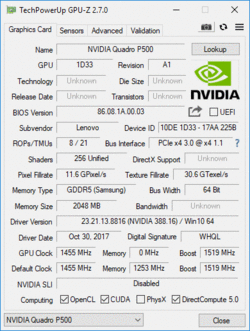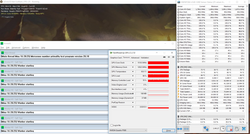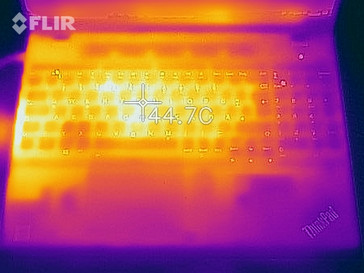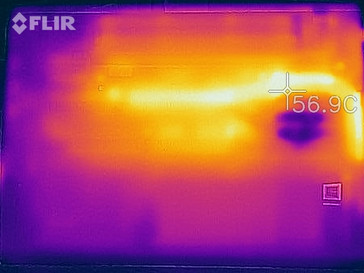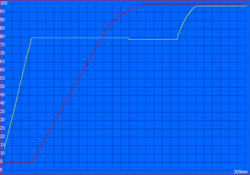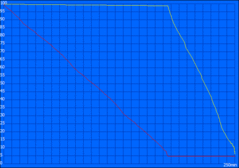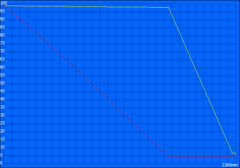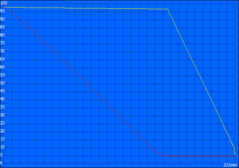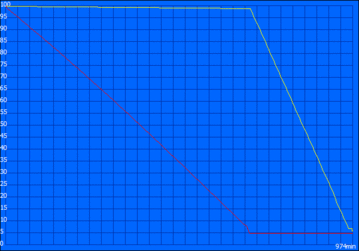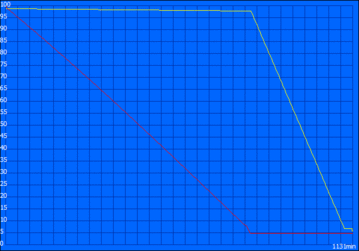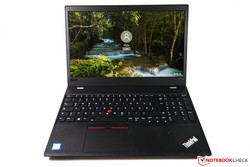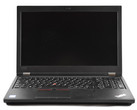Lenovo ThinkPad P52s (i7-8550U, Full HD) Workstation Review

Lenovo’s mobile workstations used to be known as the ThinkPad W series – although they were never completely independent and could be considered versions of the 15-inch T series with ISV-certified graphics. The ThinkPad W550s, for example, was based on the ThinkPad T550. In 2015, the introduction of the new ThinkPad P series mixed things up a little, as the devices in this series, such as the Lenovo ThinkPad P51, had their own individual design. However, all rules have exceptions: While the more powerful models had individual designs, the P5Xs series continued in the tradition of the W series. Since 2015, Lenovo has launched three ThinkPad P models with a design based on the current T series: The ThinkPad P50s was based on the ThinkPad T560, the ThinkPad P51s on the ThinkPad T570 and the case of today’s test unit, the Lenovo ThinkPad P52s, is identical to that of the ThinkPad T580.
In the rather particular category of "ultrabook workstations," the HP ZBook 15u G5 is the only real competitor to the ThinkPad P52s. Other comparison devices we have chosen are the Lenovo ThinkPad T580, the Lenovo ThinkPad P51 and the predecessor ThinkPad P51s.
The model number of our particular test unit is 20LB000HGE. It is the entry-level device for the German market and is equipped with 8 GB of RAM, a 256-GB SSD and an Intel Core i7-8550U. Graphics are taken care of by an Nvidia GeForce P500, as is the case for all ThinkPad P52s variants.
CUKUSA has also provided a similar ThinkPad P52s North American SKU to verify our measurements presented here.
Changes compared to the ThinkPad P51s
This review can be considered an update as Lenovo has made no important changes to the design of our test unit compared to the ThinkPad P51s or the ThinkPad T570. You can find out more about the case, maintenance and input devices in our review of the ThinkPad T570.
Like for the T580, there have been some changes to the port selection. Lenovo has chosen a new path for its docking ports: Instead of placing a connector on the bottom of the base unit, we now have a docking port on the side. This consists of two USB C ports, one of which supports Thunderbolt 3, and a proprietary mini Ethernet connector. The additional USB C comes at the cost of one USB A port.
Like all other ThinkPads from 2018 – or at least the models without an infrared camera – the ThinkPad P52s has a mechanical camera cover which Lenovo has named “ThinkShutter”.
Connectivity
| SD Card Reader | |
| average JPG Copy Test (av. of 3 runs) | |
| Lenovo ThinkPad P51 20HH0016GE (Toshiba Exceria Pro SDXC 64 GB UHS-II) | |
| Average of class Workstation (49.6 - 189.3, n=11, last 2 years) | |
| Lenovo ThinkPad P52s-20LB000HGE (Toshiba Exceria Pro SDXC 64 GB UHS-II) | |
| Lenovo ThinkPad T580-20LAS01H00 (Toshiba Exceria Pro SDXC 64 GB UHS-II) | |
| Lenovo ThinkPad P51s 20HB000SGE (Toshiba Exceria Pro SDXC 64 GB UHS-II) | |
| maximum AS SSD Seq Read Test (1GB) | |
| Lenovo ThinkPad P51 20HH0016GE (Toshiba Exceria Pro SDXC 64 GB UHS-II) | |
| Average of class Workstation (87.6 - 227, n=11, last 2 years) | |
| Lenovo ThinkPad P51s 20HB000SGE (Toshiba Exceria Pro SDXC 64 GB UHS-II) | |
| Lenovo ThinkPad P52s-20LB000HGE (Toshiba Exceria Pro SDXC 64 GB UHS-II) | |
| Lenovo ThinkPad T580-20LAS01H00 (Toshiba Exceria Pro SDXC 64 GB UHS-II) | |
Display
Lenovo has made the ThinkPad P52s available with the exact same LCD options as its predecessor the ThinkPad P51s: A high-end option in the shape of an Ultra HD display (3840x2160p) and a Full HD screen (1920x1080p) as a cheaper option. Both LCD options have a matte surface and are based on IPS technology.
Unlike the P51s, which we tested with the Ultra HD/4K display, today’s test unit is equipped with the Full HD version. Its most important features according to Lenovo’s specification sheet: 250 cd/m² and a contrast ratio of 700:1. Luckily, our test unit topped both these values. The average brightness is about 284 cd/m² according to our measurements and the contrast ratio is even better at 2645:1. While the display brightness is still not as good as those of most competitors, the contrast is significantly higher. Even the 4K display in the ThinkPad T580, which has an almost identical build, only manages half the contrast ratio.
The screen has a very even brightness distribution. We did not measure any PWM, but there was some flickering at a very high frequency that did not fit to the traditional PWM pattern. As this occurs at a frequency of over 21 kHz, which is not noticeable to the human eye, users should not have any problems with it. There is no backlight bleeding on this display.
| |||||||||||||||||||||||||
Brightness Distribution: 91 %
Center on Battery: 291 cd/m²
Contrast: 2645:1 (Black: 0.11 cd/m²)
ΔE ColorChecker Calman: 6.7 | ∀{0.5-29.43 Ø4.77}
calibrated: 4.5
ΔE Greyscale Calman: 4.5 | ∀{0.09-98 Ø5}
61.7% sRGB (Argyll 1.6.3 3D)
39.6% AdobeRGB 1998 (Argyll 1.6.3 3D)
43.22% AdobeRGB 1998 (Argyll 3D)
62.1% sRGB (Argyll 3D)
41.83% Display P3 (Argyll 3D)
Gamma: 2.28
CCT: 7503 K
| Lenovo ThinkPad P52s-20LB000HGE NV156FHM-N47, , 1920x1080, 15.6" | HP ZBook 15u G5 2ZC05EA CMN15E7, , 1920x1080, 15.6" | Lenovo ThinkPad P51 20HH0016GE LEN40BD, B156ZAN02.1, , 3840x2160, 15.6" | Dell Precision 5520 UHD SHP1476, , 3840x2160, 15.6" | HP ZBook Studio G4-Y6K17EA SHP1445, , 3840x2160, 15.6" | Lenovo ThinkPad P51s 20HB000SGE BOE NV156QUM-N44, , 3840x2160, 15.6" | Lenovo ThinkPad T580-20LAS01H00 NV156QUM-N44, , 3840x2160, 15.6" | |
|---|---|---|---|---|---|---|---|
| Display | 3% | 99% | 60% | 94% | 56% | 55% | |
| Display P3 Coverage (%) | 41.83 | 43.05 3% | 86.3 106% | 67.4 61% | 82.6 97% | 69.7 67% | 69.2 65% |
| sRGB Coverage (%) | 62.1 | 64.7 4% | 99.5 60% | 98.5 59% | 98.9 59% | 91.2 47% | 90.7 46% |
| AdobeRGB 1998 Coverage (%) | 43.22 | 44.5 3% | 99.3 130% | 68.9 59% | 98 127% | 66.8 55% | 66.3 53% |
| Response Times | 19% | 24% | -17% | 14% | 27% | 8% | |
| Response Time Grey 50% / Grey 80% * (ms) | 47.2 ? | 41.6 ? 12% | 40.8 ? 14% | 59.2 ? -25% | 44.8 ? 5% | 38.4 ? 19% | 51.2 ? -8% |
| Response Time Black / White * (ms) | 38.4 ? | 28.8 ? 25% | 25.2 ? 34% | 41.6 ? -8% | 30 ? 22% | 24.8 ? 35% | 29.6 ? 23% |
| PWM Frequency (Hz) | 21550 ? | 25770 ? | 1497 ? | 980 ? | 952 ? | ||
| Screen | -9% | 8% | -8% | 16% | -3% | 13% | |
| Brightness middle (cd/m²) | 291 | 229 -21% | 317 9% | 372.4 28% | 324 11% | 317 9% | 310 7% |
| Brightness (cd/m²) | 284 | 212 -25% | 309 9% | 368 30% | 338 19% | 290 2% | 283 0% |
| Brightness Distribution (%) | 91 | 88 -3% | 89 -2% | 90 -1% | 78 -14% | 85 -7% | 87 -4% |
| Black Level * (cd/m²) | 0.11 | 0.23 -109% | 0.36 -227% | 0.48 -336% | 0.3 -173% | 0.32 -191% | 0.24 -118% |
| Contrast (:1) | 2645 | 996 -62% | 881 -67% | 776 -71% | 1080 -59% | 991 -63% | 1292 -51% |
| Colorchecker dE 2000 * | 6.7 | 4.2 37% | 2.7 60% | 2.6 61% | 1.6 76% | 3.6 46% | 3.1 54% |
| Colorchecker dE 2000 max. * | 20.2 | 18 11% | 4.1 80% | 5.6 72% | 4.6 77% | 6.6 67% | 7.6 62% |
| Colorchecker dE 2000 calibrated * | 4.5 | 4.2 7% | 2.2 51% | ||||
| Greyscale dE 2000 * | 4.5 | 2 56% | 3 33% | 3.7 18% | 2.5 44% | 4.2 7% | 2.3 49% |
| Gamma | 2.28 96% | 2.23 99% | 2.27 97% | 2.14 103% | 2.21 100% | 2.24 98% | 2.21 100% |
| CCT | 7503 87% | 6292 103% | 6077 107% | 7096 92% | 6273 104% | 6740 96% | 6876 95% |
| Color Space (Percent of AdobeRGB 1998) (%) | 39.6 | 41 4% | 87.6 121% | 63 59% | 85.7 116% | 59.5 50% | 59.1 49% |
| Color Space (Percent of sRGB) (%) | 61.7 | 64.5 5% | 99.5 61% | 99 60% | 98.9 60% | 91.1 48% | 90.1 46% |
| Total Average (Program / Settings) | 4% /
-3% | 44% /
28% | 12% /
4% | 41% /
31% | 27% /
13% | 25% /
20% |
* ... smaller is better
We noticed that the LCD has a significant blue cast out of the box, which is rather unusual for IPS displays. Our calibration dealt with the issue very effectively, however, and you can download the corresponding color profile from above, free of charge, as usual.
It has almost become tradition for the Full HD IPS displays that Lenovo uses for its ThinkPads to have bad color-space coverage – apart from a few exceptions, of course. The ThinkPad P52s keeps up this disappointing tradition, which does not have a good influence on its rating as a workstation. It can only manage 61% coverage of the sRGB color space, which is a very bad result that makes any kind of image-processing impossible on this display. Luckily for Lenovo, HP has not done a better job with its ZBook 15u G5, either.
Display Response Times
| ↔ Response Time Black to White | ||
|---|---|---|
| 38.4 ms ... rise ↗ and fall ↘ combined | ↗ 22.8 ms rise | |
| ↘ 15.6 ms fall | ||
| The screen shows slow response rates in our tests and will be unsatisfactory for gamers. In comparison, all tested devices range from 0.1 (minimum) to 240 (maximum) ms. » 96 % of all devices are better. This means that the measured response time is worse than the average of all tested devices (20.2 ms). | ||
| ↔ Response Time 50% Grey to 80% Grey | ||
| 47.2 ms ... rise ↗ and fall ↘ combined | ↗ 25.2 ms rise | |
| ↘ 22 ms fall | ||
| The screen shows slow response rates in our tests and will be unsatisfactory for gamers. In comparison, all tested devices range from 0.165 (minimum) to 636 (maximum) ms. » 81 % of all devices are better. This means that the measured response time is worse than the average of all tested devices (31.6 ms). | ||
Screen Flickering / PWM (Pulse-Width Modulation)
| Screen flickering / PWM detected | 21550 Hz | ≤ 91 % brightness setting | |
The display backlight flickers at 21550 Hz (worst case, e.g., utilizing PWM) Flickering detected at a brightness setting of 91 % and below. There should be no flickering or PWM above this brightness setting. The frequency of 21550 Hz is quite high, so most users sensitive to PWM should not notice any flickering. In comparison: 53 % of all tested devices do not use PWM to dim the display. If PWM was detected, an average of 8083 (minimum: 5 - maximum: 343500) Hz was measured. | |||
Typically for IPS displays, we cannot criticize its viewing angles. Unlike on TN panels, the colors remain the same from every angle. However, we did notice a slight IPS glow effect when looking down at the screen from above. This effect should not affect your day-to-day experience – we just wanted to mention it, as this does not occur on every IPS display.
Performance
The P52s is currently available in five different configurations in Germany, while there is only one pre-configured version available in the US. You can also configure the Lenovo P52s yourself via the Lenovo Shop.
There is one thing that all versions of the Lenovo ThinkPad P52s have in common: The dedicated Nvidia Quadro P500. There are two processors available: The Intel Core i7-8550U and the fastest “Kaby Lake Refresh” processor, the Core i7-8650U. There is a little more choice when it comes to storage devices. The fixed configurations are available with PCIe NVMe SSDs with 256 GB, 512 GB or 1 TB capacity. You can also have 2, 16 or 32 GB of DDR4-2400 RAM. This is officially the maximum capacity due to the two RAM slots (although 32 GB DDR4-SODIMM modules should soon be available on the market, so 64 GB might be possible then).
Processor
The Intel Core i7-8550U is an Ultra-Low-Voltage processor with four CPU cores. It has a standard TDP of 15 watts, which makes it ideal for ultrabooks. Its four cores clock at 1.8 GHz (base clock rate) or 4 GHz (turbo clock rate). You can find out more information on the general performance of this processor in our CPU comparison list.
Workstations are usually equipped with processors that have a TDP of 45 watts – which are marketed as “Core i H series” by Intel. After all, high performance is more important than long battery runtimes in this kind of device. “Ultrabook workstations” such as the P52s and its predecessors are an exception. The CPU performance of these affordable workstations was always quite weak – but then the ULV CPUs in these devices only ever had two cores up until now. The ThinkPad P52s actually comes quite close to the performance of the Intel Core i7-7700HQ, the most-used H processor of the last generation of workstations, with its quad-core ULV processor. We measured 719 points in the Cinebench Multicore test, which is an excellent result for this CPU.
However, this performance is short-lived as the good results are due to the maximum turbo boost. This is only available as long as the processor is allowed to consume 44 watts, which is for the first 30 seconds of the test. After that, the TDP power limit, which Lenovo has set to 25 watts, is activated and the performance drops significantly after the first round of our Cinebench loop. But the P52s cannot keep up this performance in the long run either – the cooling system is not strong enough. After several rounds, the CPU performance suddenly drops again. While it does recover somewhat, it never reaches the same level as before and continues to fluctuate.
However, we must mention that the results of the P52s are still above-average for this processor. The HP ZBook 15u G6 is significantly slower and the ThinkPad P51s is only half as fast. The P52s can definitely be used for demanding tasks, but you should be aware that it still cannot compare with the performance of the “real” workstations with H CPUs when it comes to multi-core performance – particularly if you compare it to the current H processors that are equipped with six CPU cores. The Intel Core i7-8750H in the Schenker Key 15, for example, is over 50% faster than the Core i7-8550U in the P52s.
System Performance
The everyday system performance is normal – the P52s runs smoothly and works quickly. The PCMark 8 benchmark results confirm our personal impression and we noticed that the ThinkPad P51s and the ThinkPad T580 scored significantly lower results. They are both equipped with an Ultra HD display while our P52s only has a Full HD screen, which improves the system speed significantly.
| PCMark 8 Home Score Accelerated v2 | 3728 points | |
| PCMark 8 Creative Score Accelerated v2 | 4851 points | |
| PCMark 8 Work Score Accelerated v2 | 4980 points | |
| PCMark 10 Score | 3498 points | |
Help | ||
Storage Device
The ThinkPad P52s comes with a single PCIe NVMe SSD ex-works – in this case with a Samsung PM961 with a capacity of 256 GB. Due to the particular build of the P52s, the M.2 2280 SSD is placed in a 2.5-inch slot via an adapter, which limits the speed to PCIe 3.0 x2. A comparison with the ThinkPad P51, which is equipped with the same SSD with 512 GB, shows this limitation clearly. This should not have an impact on everyday use but copying large amounts of data (which is a likely scenario for a workstation) might take a little longer due to this limitation.
The P52s can also be equipped with a second PCIe NVMe SSD, but this is limited to the smaller M.2 2242 form factor. It can be inserted into the M.2 slot for the WWAN card – so you would have to forego WWAN.
| Lenovo ThinkPad P52s-20LB000HGE Samsung PM961 MZVLW256HEHP | HP ZBook 15u G5 2ZC05EA Toshiba XG5 KXG50ZNV256G | Lenovo ThinkPad P51 20HH0016GE Samsung PM961 NVMe MZVLW512HMJP | Dell Precision 5520 UHD Samsung SM961 MZVKW512HMJP m.2 PCI-e | HP ZBook Studio G4-Y6K17EA Samsung SM961 MZVKW512HMJP m.2 PCI-e | Lenovo ThinkPad P51s 20HB000SGE Samsung SSD PM961 1TB M.2 PCIe 3.0 x4 NVMe (MZVLW1T0) | Lenovo ThinkPad T580-20LAS01H00 Samsung SSD PM981 MZVLB512HAJQ | Average Samsung PM961 MZVLW256HEHP | |
|---|---|---|---|---|---|---|---|---|
| CrystalDiskMark 3.0 | 3% | 51% | 54% | 46% | 24% | -11% | 16% | |
| Read Seq (MB/s) | 898 | 2040 127% | 1705 90% | 2253 151% | 2229 148% | 1189 32% | 944 5% | 1627 ? 81% |
| Write Seq (MB/s) | 862 | 917 6% | 1541 79% | 1662 93% | 1562 81% | 1138 32% | 924 7% | 1136 ? 32% |
| Read 512 (MB/s) | 557 | 912 64% | 1038 86% | 459.1 -18% | 391.4 -30% | 782 40% | 555 0% | 887 ? 59% |
| Write 512 (MB/s) | 558 | 488.9 -12% | 1157 107% | 1611 189% | 1279 129% | 959 72% | 565 1% | 781 ? 40% |
| Read 4k (MB/s) | 61.6 | 35.5 -42% | 61.3 0% | 56.1 -9% | 56.5 -8% | 54.8 -11% | 63.9 4% | 53 ? -14% |
| Write 4k (MB/s) | 164.8 | 99.1 -40% | 176 7% | 169.4 3% | 182 10% | 161.4 -2% | 135.3 -18% | 126.7 ? -23% |
| Read 4k QD32 (MB/s) | 563 | 276.7 -51% | 664 18% | 633 12% | 645 15% | 642 14% | 336.2 -40% | 419 ? -26% |
| Write 4k QD32 (MB/s) | 470.7 | 351.5 -25% | 560 19% | 506 7% | 595 26% | 549 17% | 264.9 -44% | 384 ? -18% |
Graphics
The Nvidia Quadro P500 is the slowest version of Nvidia's current Quadro lineup. As you can see from its first letter, it is based on Pascal GPU architecture and is the Quadro version of the Nvidia GeForce MX150. It is not identical, however, as the Device ID of the Quadro P500 in our P52s is "10DE 1D33" while the MX150 in the ThinkPad T580 is called "10DE 1D10". We also noticed that the Quadro P500 only has 256 shader units while the MX150 has 384.
The benchmark results of the 3DMark test are accordingly disappointing for the P52s. The ThinkPad T580 is about 45% faster. Even compared to the Nvidia Quadro M520 in last year's model ThinkPad P51s, the comparison does not look good. The Quadro P500 is faster in 3DMark 11, but the processor also plays an important role in this test. The older Maxwell GPU is actually slightly faster than its successor in the 3DMark Fire Strike. The Radeon Pro WX 3100 Mobile in the ZBook 15u G5 is clearly faster in the 3DMark tests.
In addition to the 3DMark tests, we also use other benchmarks to test workstations. The SPECviewperf 12 test, for instance, simulates professional applications. At least here the Quadro P500 is quite convincing. While it cannot keep up with older high-performance Quadro GPUs such as the Quadro M1200 and the Quadro M2200, it does beat both the ZBook 15u G5 and the ThinkPad P51s in every test of this set of benchmarks.
| 3DMark 11 Performance | 3338 points | |
| 3DMark Fire Strike Score | 2144 points | |
| 3DMark Fire Strike Extreme Score | 921 points | |
Help | ||
Gaming Performance
Quadro GPUs are not optimized for gaming, but of course you should be able to play PC games with CAD-optimized graphics chips. However, our gaming benchmarks show that the Nvidia Quadro P500 is anything but ideal for this scenario: Newer games can only be played at very low details while older titles can be displayed in higher details and at higher resolutions. But even occasional gamers will be happier with the ThinkPad T580, as its Nvidia GeForce MX150 is clearly more suited to gaming. It was 21% faster in The Witcher 3 and 32% faster in BioShock Infinite.
| BioShock Infinite - 1920x1080 Ultra Preset, DX11 (DDOF) | |
| Dell Precision 5520 UHD | |
| HP ZBook Studio G4-Y6K17EA | |
| Lenovo ThinkPad T580-20LAS01H00 | |
| Lenovo ThinkPad P52s-20LB000HGE | |
| Average NVIDIA Quadro P500 (n=1) | |
| Lenovo ThinkPad P51s 20HB000SGE | |
| HP ZBook 15u G5 2ZC05EA | |
| The Witcher 3 - 1366x768 Medium Graphics & Postprocessing | |
| Average of class Workstation (81.6 - 351, n=5, last 2 years) | |
| Lenovo ThinkPad P51 20HH0016GE | |
| HP ZBook Studio G4-Y6K17EA | |
| Lenovo ThinkPad T580-20LAS01H00 | |
| HP ZBook 15u G5 2ZC05EA | |
| Lenovo ThinkPad P52s-20LB000HGE | |
| Average NVIDIA Quadro P500 (23 - 26.3, n=2) | |
| low | med. | high | ultra | |
|---|---|---|---|---|
| BioShock Infinite (2013) | 134.9 | 77.8 | 66.4 | 24.7 |
| The Witcher 3 (2015) | 35.8 | 26.3 | 14.5 | 8.2 |
| Dota 2 Reborn (2015) | 92.9 | 85.3 | 49 | 44.8 |
| Rise of the Tomb Raider (2016) | 47.8 | 27.7 | 14.5 | |
| The Division (2016) | 47.7 | 29 | 12.9 | |
| For Honor (2017) | 63.4 | 21.4 | 21 | 16 |
| Ghost Recon Wildlands (2017) | 36.9 | 14.7 | ||
| Assassin´s Creed Origins (2017) | 33 | 14 | ||
| Star Wars Battlefront 2 (2017) | 55.6 | 17.3 | ||
| Far Cry 5 (2018) | 32 | 15 | 13 |
Emissions
System Noise
The cooling fan of the Lenovo ThinkPad P52s is usually turned off while idling, but not always. It does occasionally make an appearance under very low load. When the ThinkPad is under heavier load, the fan turns up and can reach a maximum noise level of 37.5 dB(A). This is not extremely loud but can be quite bothersome as the sound has a relatively high frequency.
Noise level
| Idle |
| 29 / 29 / 31.2 dB(A) |
| Load |
| 32.5 / 37.5 dB(A) |
 | ||
30 dB silent 40 dB(A) audible 50 dB(A) loud |
||
min: | ||
Temperature
There are no noticeable hotspots while idling or working under low load. The surface temperature remains very even and is only a few degrees above room temperature. Things look different under load, however, as particularly the bottom of the base unit heats up to over 50 °C, which is very warm. A look at the pictures taken with our thermal camera show the placement of the heat pipes quite clearly. It might not be ideal to use this device on your lap under load - we would recommend placing it on a hard surface. You will notice the heat while typing on the center and the left side of the keyboard.
When evaluating our stress test, it becomes quite clear why the cooling system is kept so very busy. While the processor loses some performance after a while and clocks at 4x 1.8 GHz (~14 W TDP) at the end of the test, the graphics card runs at its maximum turbo clock rate of around 1520 MHz throughout the test. A run of 3DMark 11 after the stress test had the same result as before.
(±) The maximum temperature on the upper side is 41.8 °C / 107 F, compared to the average of 38.2 °C / 101 F, ranging from 22.2 to 69.8 °C for the class Workstation.
(-) The bottom heats up to a maximum of 55.9 °C / 133 F, compared to the average of 41.1 °C / 106 F
(+) In idle usage, the average temperature for the upper side is 25.7 °C / 78 F, compared to the device average of 32 °C / 90 F.
(±) The palmrests and touchpad can get very hot to the touch with a maximum of 36.9 °C / 98.4 F.
(-) The average temperature of the palmrest area of similar devices was 27.8 °C / 82 F (-9.1 °C / -16.4 F).
Speakers
The current models of the ThinkPad T series all have stereo speakers placed on the bottom of the base unit. As the P52s is based on the T580, this is also the case in our test unit. This positioning is not ideal for sound quality, particularly if the laptop is placed on a soft surface. However, the speakers do not offer very good quality anyway and you will have to connect to external speakers or headphones to get a nice sound.
Lenovo ThinkPad P52s-20LB000HGE audio analysis
(±) | speaker loudness is average but good (80.6 dB)
Bass 100 - 315 Hz
(-) | nearly no bass - on average 15% lower than median
(±) | linearity of bass is average (11.7% delta to prev. frequency)
Mids 400 - 2000 Hz
(±) | higher mids - on average 5.6% higher than median
(+) | mids are linear (5.7% delta to prev. frequency)
Highs 2 - 16 kHz
(+) | balanced highs - only 3.1% away from median
(+) | highs are linear (5.7% delta to prev. frequency)
Overall 100 - 16.000 Hz
(±) | linearity of overall sound is average (17.8% difference to median)
Compared to same class
» 55% of all tested devices in this class were better, 11% similar, 35% worse
» The best had a delta of 7%, average was 17%, worst was 35%
Compared to all devices tested
» 35% of all tested devices were better, 8% similar, 57% worse
» The best had a delta of 4%, average was 24%, worst was 134%
HP ZBook 15u G5 2ZC05EA audio analysis
(+) | speakers can play relatively loud (83.6 dB)
Bass 100 - 315 Hz
(-) | nearly no bass - on average 24.9% lower than median
(±) | linearity of bass is average (9.7% delta to prev. frequency)
Mids 400 - 2000 Hz
(+) | balanced mids - only 1.5% away from median
(+) | mids are linear (5.2% delta to prev. frequency)
Highs 2 - 16 kHz
(+) | balanced highs - only 3.9% away from median
(+) | highs are linear (2.1% delta to prev. frequency)
Overall 100 - 16.000 Hz
(±) | linearity of overall sound is average (17.9% difference to median)
Compared to same class
» 55% of all tested devices in this class were better, 11% similar, 34% worse
» The best had a delta of 7%, average was 17%, worst was 35%
Compared to all devices tested
» 36% of all tested devices were better, 8% similar, 56% worse
» The best had a delta of 4%, average was 24%, worst was 134%
Frequency diagram in comparison (checkboxes can be turned on/off!)
Energy Management
Power Consumption
The average power consumption of the ThinkPad P52s is on par with that of its direct competitor, the HP ZBook 15u G5. However, this average value is deceiving, as these two devices have very different patterns of power consumption. While the ZBook consumes less while idling, the ThinkPad is more energy-efficient when working under load. The idle value is more important for everyday use, but the power consumption of both devices is a lot lower than those of workstations with 45-Wh processors anyway. This is probably the biggest advantage of "ultrabook workstations".
The included USB C power supply offers 65 watts - precisely the maximum consumption of the P52s.
| Off / Standby | |
| Idle | |
| Load |
|
Key:
min: | |
| Lenovo ThinkPad P52s-20LB000HGE i5-8550U, Quadro P500, Samsung PM961 MZVLW256HEHP, IPS LED, 1920x1080, 15.6" | HP ZBook 15u G5 2ZC05EA i5-8550U, Radeon Pro WX 3100, Toshiba XG5 KXG50ZNV256G, IPS LED, 1920x1080, 15.6" | Lenovo ThinkPad P51 20HH0016GE E3-1505M v6, Quadro M2200, Samsung PM961 NVMe MZVLW512HMJP, IPS, 3840x2160, 15.6" | Dell Precision 5520 UHD E3-1505M v6, Quadro M1200, Samsung SM961 MZVKW512HMJP m.2 PCI-e, IPS, 3840x2160, 15.6" | HP ZBook Studio G4-Y6K17EA E3-1505M v6, Quadro M1200, Samsung SM961 MZVKW512HMJP m.2 PCI-e, IPS, 3840x2160, 15.6" | Lenovo ThinkPad P51s 20HB000SGE i7-7600U, Quadro M520, Samsung SSD PM961 1TB M.2 PCIe 3.0 x4 NVMe (MZVLW1T0), IPS, 3840x2160, 15.6" | Lenovo ThinkPad T580-20LAS01H00 i5-8550U, GeForce MX150, Samsung SSD PM981 MZVLB512HAJQ, IPS LED, 3840x2160, 15.6" | |
|---|---|---|---|---|---|---|---|
| Power Consumption | 0% | -97% | -95% | -117% | -27% | -21% | |
| Idle Minimum * (Watt) | 4.1 | 3.2 22% | 8.6 -110% | 8.9 -117% | 12.6 -207% | 5.8 -41% | 5.3 -29% |
| Idle Average * (Watt) | 7.7 | 6.1 21% | 15.9 -106% | 13.6 -77% | 17.1 -122% | 10.4 -35% | 10.2 -32% |
| Idle Maximum * (Watt) | 10.7 | 9.7 9% | 22.1 -107% | 14.1 -32% | 19.3 -80% | 13.5 -26% | 13.6 -27% |
| Load Average * (Watt) | 52 | 62 -19% | 84.4 -62% | 100.3 -93% | 88.3 -70% | 62.4 -20% | 58.3 -12% |
| Witcher 3 ultra * (Watt) | 38.8 | 48 -24% | 100.2 -158% | 74.8 -93% | 47.8 -23% | ||
| Load Maximum * (Watt) | 65 | 71 -9% | 130.6 -101% | 126.3 -94% | 147.3 -127% | 73.1 -12% | 65.3 -0% |
* ... smaller is better
Battery Runtimes
Like all its predecessors, the P52s has a "PowerBridge" - this is the name Lenovo has given the feature that combines an internal battery with an external hot-swap battery. The internal battery always has a capacity of 32 Wh, but the external battery is available in different sizes. Our test unit is equipped with the largest lithium-ion battery with a capacity of 72 Wh. The total battery capacity, therefore, is 104 Wh.
This gigantic battery capacity pushes the P52s to the top of our comparison of battery runtimes. It manages 16 hours in our Wi-Fi test, which is almost unbeatable for laptops of this size. Interestingly enough, the battery runtime results of the ThinkPad T580 are only half as good in many areas, which is probably due to the worse power consumption. The ZBook 15u G5 can also reach a respectable result, but its battery is significantly smaller - only half as big. The ThinkPad P52s can therefore clearly be considered a true runtime champion.
The long battery runtimes come at a price: The charging time of the P52s is very long at 309 minutes as two batteries have to be recharged at the same time.
| Lenovo ThinkPad P52s-20LB000HGE i5-8550U, Quadro P500, 104 Wh | HP ZBook 15u G5 2ZC05EA i5-8550U, Radeon Pro WX 3100, 56 Wh | Lenovo ThinkPad P51 20HH0016GE E3-1505M v6, Quadro M2200, 90 Wh | Dell Precision 5520 UHD E3-1505M v6, Quadro M1200, 97 Wh | HP ZBook Studio G4-Y6K17EA E3-1505M v6, Quadro M1200, 64 Wh | Lenovo ThinkPad P51s 20HB000SGE i7-7600U, Quadro M520, 104 Wh | Lenovo ThinkPad T580-20LAS01H00 i5-8550U, GeForce MX150, 105 Wh | Average of class Workstation | |
|---|---|---|---|---|---|---|---|---|
| Battery runtime | -37% | -58% | -72% | -80% | -13% | -44% | -49% | |
| Reader / Idle (h) | 39.3 | 21.7 -45% | 16.4 -58% | 12.1 -69% | 6.8 -83% | 26.4 -33% | 19.7 -50% | 26.1 ? -34% |
| H.264 (h) | 18.9 | 10.4 -45% | 7.6 -60% | 11.7 -38% | 9.4 -50% | 9.51 ? -50% | ||
| WiFi v1.3 (h) | 16.2 | 8.6 -47% | 6.9 -57% | 4.2 -74% | 3.4 -79% | 11.9 -27% | 8.7 -46% | 8.4 ? -48% |
| Load (h) | 3.7 | 3.3 -11% | 1.6 -57% | 1 -73% | 0.8 -78% | 5.4 46% | 2.6 -30% | 1.364 ? -63% |
Verdict
Pros
Cons
Up until now, the idea of a workstation laptop with energy-efficient processors has never really worked out. The Lenovo ThinkPad P52s is the first laptop where this concept is finally starting to take off.
This is mainly due to the fact that the Ultra-Low-Voltage processors of the Kaby Lake Refresh generation have made a great leap when it comes to performance. Although the CPU performance is still far off from competing with that of the 45-Watt Coffee Lake CPUs, it still fulfills the minimum requirements for a mobile workstation. On top of this, the processor's performance is above-average in the P52s and significantly better than in the ZBook 15u G5, which is equipped with the same processor. The P52s has also carried over a number of positive features from the ThinkPad T580, such as the robust case with good maintenance options, the popular ThinkPad input devices, the great selection of ports and security features and the long standard warranty. Unlike the T580, our test unit has good battery runtimes and PowerBridge, which offers great advantages.
Ironically, the Quadro P500, the only real difference between the P52s and the ThinkPad T580, is also the device's biggest weakness. The performance of the Quadro GPU cannot keep up with that of the GeForce MX150 in the T580 due to the limited number of shaders. Of course, there are also some disadvantages of the T580 that have been carried over to the P52s, such as the long charging times and the high heat development under load. The display of our P52s only has a Full HD resolution. Some of the measurements are significantly above Lenovo's specifications - for example, the high contrast ratio. However, color-space coverage is as bad as always, which is quite a black mark for a mobile workstation.
We can basically recommend the Lenovo ThinkPad P52s, but it will only be really interesting for a small group of potential buyers as the Quadro P500 is simply too weak.
Can we give a purchase recommendation for the ThinkPad P52s? Basically, yes. It beats its direct competitor, the HP ZBook 15u in many areas - only temperature management and the feel of the case are better in the ZBook. But still, the P52s will only really be suitable for a small group of users since the ThinkPad T580 offers all the qualities of the P52s and has a stronger GPU. Only users of CAD software might prefer the P52s - but again the question is whether these users might prefer to purchase a thicker, heavier workstation with a stronger CPU and GPU. This limits the target market to a few users who need long battery runtimes and a GPU optimized for CAD.
Lenovo ThinkPad P52s-20LB000HGE
- 06/25/2018 v6 (old)
Benjamin Herzig


